An idea can sound great in the conference room, but when you get it out there... not so much. Sometimes what you thought was a great idea can go terribly wrong in so many ways.
Whether it’s how it's executed or how it's perceived, the end result can be a complicated mess that can hurt your brand.
Today, marketers are exploring new channels and new media. Competition is intense and as you chase after that viral video or trending tweet, marketing fails happen. In fact, even the biggest, most recognizable brands make them. And these blunders can be incredibly costly.
Why Do Marketing Campaigns Fail?
The most straightforward answer is marketers forget who they're advertising to.
A lot of blunders can be accounted for by the fact that marketers sometimes take their eye off the prize and focus on being "creative" or "unique" rather than reaching their target audience.
Creating campaigns that stand out is an important part of the process, but an effort to be ostentatious should never come with the compromise of alienating your buyers.
Some organizations simply didn't have realistic goals for their campaigns or they just got the timing wrong. Admittedly, a campaign can flop by sheer bad luck. But there are still certain precautions you can take to minimize the risk.
Marketing campaigns are meant to communicate the value your business can provide. What needs can you meet? How do you do it differently from others?
If your campaigns are lacking the purpose of uplifting your brand and drawing in customers, then they're pretty much set to fail.
12 Worst Marketing Fails of All Time
In an age of consumerism and digital media, all eyes are locked on a brand's every move. That's great for product launches and brand awareness, but it can easily backfire on a company if they miss the mark. Here are some examples of marketing fails that made us wince:
1. Pepsi: Kendall Jenner TV Spot
We'd have loved to have been in on this creative meeting. The end result was arguably one of the most spectacular marketing fails of the year.
Pepsi wanted to equate its product as a culturally unifying force. OK, not a bad goal for your campaign. But what happened next must have been fun to see...
“Hey, let's get reality show star Kendall Jenner, and we can have her settle a Black Lives Matter standoff between protestors and police by offering a police officer a can of Pepsi...”
The result? Outrage.
The spot was ridiculed on social media, parodied on SNL, and quickly pulled. Advertising agencies used it to eviscerate Pepsi's in-house ad group by saying the fiasco never would have happened if only they'd used an agency.
Six months later PepsiCo president Brad Jakeman stepped down, telling Ad Age the spot was “the most gut-wrenching experience of my career.”
2. Dove: Body Positive Packaging
Dove had a win with the positive body image “Real Beauty" campaign featuring real women in a positive light. It was an empowering campaign.
In fact, the campaign has been running for 15 years and is widely noted as one of the most successful marketing campaigns. The company is striving to help reinforce a positive body image for women.
Then, Dove got their hands dirty. In England, they released limited edition packaging designed to present diverse representations of female bodies. Their packaging compared women's figures to abstract, shapeless soap bottles.
Simply put, the packaging sent the wrong message.
The release became a punchline and a source of genuine concern on social platforms like Twitter and Facebook. They only released seven different shapes to choose from, forcing women to choose the bottle that matched their shape.
Instead of reinforcing a strong body image, it ended up increasing self-consciousness.
3. McDonald's: UK TV Spot
Seems like advertisers in the UK took a lot of heat for a bunch of really bad marketing ideas in 2017! This time it was McDonald’s.
It's hard to offend anyone with fast food, but McDonald’s pulled it off with spectacularly bad taste.
The spot shows a young boy talking with his mother about his dead father. Well, it turns out that one of the things they both shared was a love for filet-o-fish sandwiches.
Yikes!

McDonald’s took a lot of heat from haters on social media who accused them of “exploiting grief to sell sandwiches.”
4. Ford: Print Misfire
In the year when the misdeeds of Harvey Weinstein and #MeToo dominated the news, Ford ran the worst possible visual for their ad campaign. It featured three women who were bound, gagged, and stuffed in the trunk of their new Ford hatchback.
The ad was pulled, and Ford had to issue a public apology because many people rightly found the ad offensive and felt that it encouraged violence against women.

5. Sony: "Racist" Print Ad
This Sony ad ran in 2006. It was promoting Sony's white Playstation Portable device.
Sony decided to promote the new product in a... well, questionable way. On the giant ad, a pale woman with white hair is seen grabbing a black woman by the face. The white figure looks upset and determined while the black figure looks very submissive.
The text reads "Playstation Portable. White is Coming."
There are tons of better ways to promote the launch of your new product. Sony was quoted as saying, "The images that were used in the campaign were intended solely to highlight the contrast between the different colors available for the PSP."

6. Burger King: Smartphone Campaign
In what was initially a great marketing idea, Burger King created a campaign to run on smart devices that activated the device to read a list of burger ingredients posted on Wikipedia, the crowdsourced online encyclopedia.
This was a great idea before hackers altered the Wikipedia post to include ingredients like cyanide.
As a result of the hack, the campaign was pulled, and a potentially innovative marketing channel was temporarily sidelined. This is particularly unfortunate because the concept of this campaign was pretty smart.
7. Audi: Chinese Wedding Commercial
It’s always important to check out a car before you purchase it. Audi turned this idea on its head.
In the commercial, the groom's mother walks up to the altar and starts checking out her soon-to-be-daughter-in-law. She pinches her lip, pulls on her ears, and looks at her teeth and tongue, before giving a nod of approval to her son.
Then, the tagline reads, “An important decision must be made carefully."
Unfortunately, this commercial misses the mark by objectifying women and reducing their value to that of a vehicle. It was far more offensive than it was humorous.
8. Adidas: Boston Marathon Email
Customers who participated in the Boston Marathon in 2017 received a very poorly worded email from the major shoe and sports attire company.
The subject line simply read, "Congrats, you survived the Boston Marathon!"
In the context of any other fitness event, this might seem harmless. In fact, many people use this kind of phrasing when they refer to completing an event. For example, some might say they survived their first Crossfit class.
But this message was sent on the heels of the 2013 Boston Marathon bombing, which killed three people and injured more than 250 people. Needless to say, many people were offended.
Adidas immediately issued an apology, but the damage was already done.
9. Airbnb: Floating World Email
This is another marketing fail that was caused by bad timing. Airbnb launched its ‘floating world’ marketing campaign, which included an image of a water-themed house sitting on the surface of water.
The copy included, “Stay above water,” and “live the life aquatic with these floating homes.”
Harmless right?
Well, this campaign launched on August 28, 2017, when Hurricane Harvey was engulfing Houston. Not a great look!
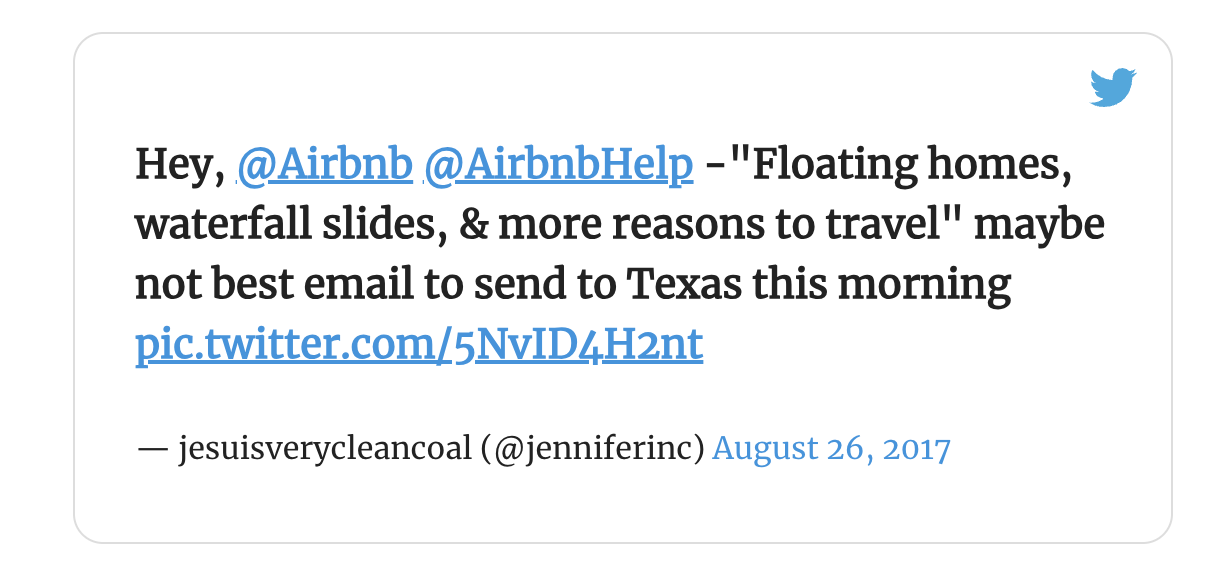
10. Ink Coffee: Gentrification Sign
What started out as a simple joke on a sign outside of a Denver coffee shop led to a national uproar. The owner of the cafe put out a sign that read, “Happily gentrifying the neighborhood since 2014.”
The issue is that gentrification also leads to the displacement of residents, who are typically lower-income minorities. Ink Coffee was met with big crowds of protestors and even vandalism.

11. Microsoft: Bing and Decide
When internet users think of a search engine, they think of Google. Conversations often start with “I Googled the address” or “Can you Google that?” In the early 2010s, Bing tried to get in on the action, encouraging users to “Bing and decide.”
Major fail.
Nobody wanted to "Bing." To make matters worse, they let the campaign run a little too long. When Microsoft finally decided to scrap it, they remained convinced that it had been a good idea.
12. Susan G. Komen Ditched Planned Parenthood
On January 30, 2014, Planned Parenthood issues a press release announcing that it was deeply disappointed that the Susan G. Komen for the Cure Foundation had decided to stop funding breast cancer prevention, screenings and education at Planned Parenthood health centers.
The move was political, and very unpopular. Per the press release, "Anti-choice groups in America have repeatedly threatened the Susan G. Komen for the Cure Foundation for partnering with Planned Parenthood to provide these lifesaving cancer screenings and news articles suggest that the Komen Foundation ultimately succumbed to these pressures."
Needless to say, the effect was the reverse of what activists intended, since Planned Parenthood received over $3 million in just three days as a response to the funding pull. We're not political here at Bluleadz, but we know a bad marketing move when we see one and couldn't skip this one over!
12 Social Media Marketing Fails
It's a pretty big deal when marketing misses the mark on television or in print, but it can be just as harmful when it's on as small a screen as a smartphone. Here are some of the worst cases of social media flubs made by popular brands.
1. Dove: “Racist" Facebook Ad
Unilever had a bad year in 2017. Another Dove ad posted on Facebook was a four-panel image showing a young African American woman removing her shirt over three panels.
The fourth panel shows a young white woman. Oops!
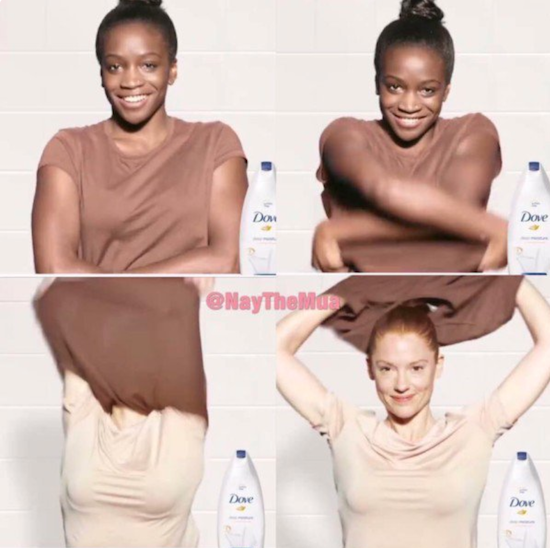
The ad actually showed up in Google search results as “Dove racist ad.” While no agency has taken “credit,” Unilever said the ad was intended to show “the diversity of real beauty.”
What it got was pretty ugly reviews and plenty of well-deserved heat on social media. Dove apologized (for the second time in 2017), and it was strike two for Brad Jakeman.
2. Walkers: Selfie Competition
Walkers is a UK-based snack company that implemented a social media campaign where customers submitted selfies for an opportunity to win tickets to a major sporting event.
Unfortunately, some people submitted pictures of dictators, serial killers, and criminals.
The end result of their failure to audit the pictures before publishing them created a PR nightmare for the company.

3. Wendy's: Twitter Meme
Wendy's got into a tweet battle with customers over whether they really use fresh beef. At first, it wasn't a big deal, but it eventually escalated.
Then, Wendy's responded by posting a meme. No big deal right?
Wrong. The meme they posted was “Pepe the frog.” If you don't know what that is (and why should you?), Pepe was used by white supremacists in the U.S. presidential election in 2016.
The images were pulled, but not before screenshots were taken, and while Wendy's quickly realized their mistake, the damage was done. Not a great day for Wendy's.

4. The Department of Education: Twitter Typos
Typos aren't usually a big deal unless you're the Department of Education! They tweeted a W.E.B. Du Bois quote that included his name misspelled.
Then, they responded with an apology that happened to include the word ‘apology’ misspelled.
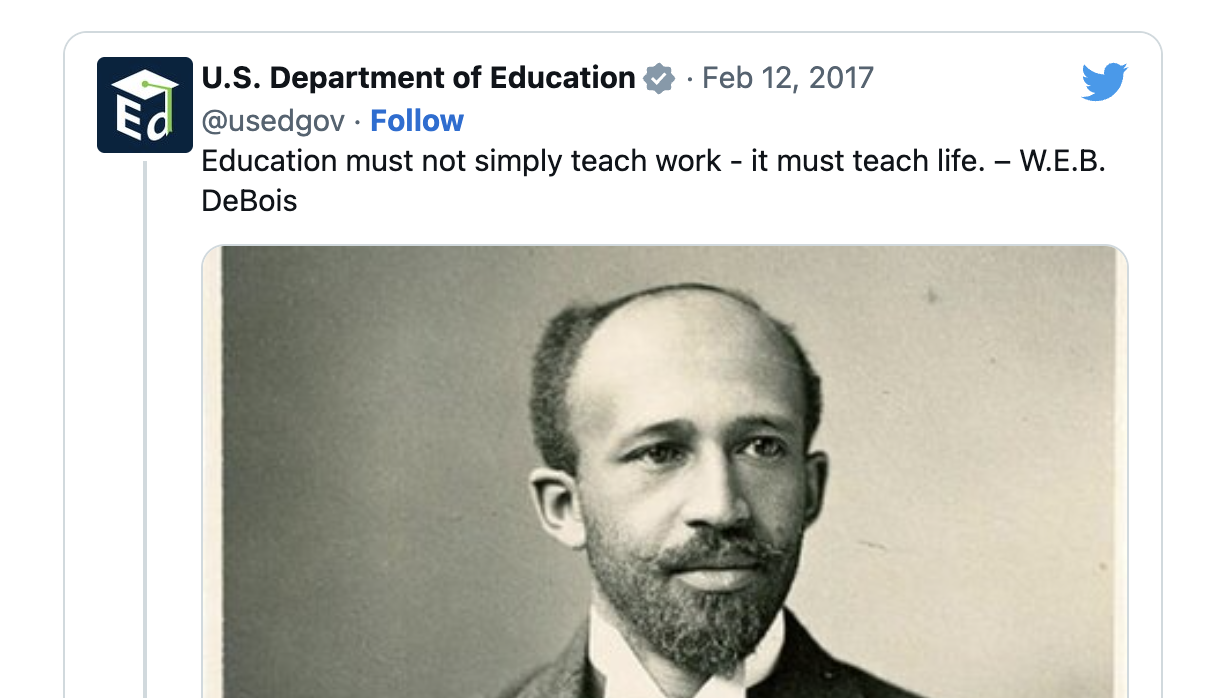
It was certainly not a great start for controversial Education Secretary at the time Betsy DeVos. In terms of marketing fails, this one got her and the department torched!
The computer systems at the DoE are old, we think they can still handle a spell check!
5. Facebook: VR Puerto Rico Tour
Following the devastation of a horrible hurricane season, Puerto Rico was left in shambles. Mark Zuckerberg used Facebook’s virtual reality app Spaces to tour through an NPR-produced 360 degree video of Puerto Rico.
While the intention behind this Facebook Live video was to show how much aid Facebook was providing to Puerto Rico, it made the company appear completely oblivious to reality. The avatars on screen sported cartoonish smiling faces.
The general reaction was that Zuckerberg seemed to be exploiting the disaster to show off Facebook’s VR capabilities. Just another hint that he may not be human...

6. United States Air Force: Yanny/Laurel Tweet
For a short while, the nation was captivated by a single audio clip. People heard either ‘yanny’ or ‘laurel.’ It was a fun, lighthearted debate, but the U.S. Air Force took it to a dark place.
They tweeted, “The Taliban Forces in Farah city #Afghanistan would much rather have heard #Yanny or #Laurel than the deafening #BRRRT they got courtesy of our #A10.”
This tweet was widely considered insensitive, and the Air Force eventually took it down and apologized. Come on guys! That's unacceptable!

7. Nivea: Purity Post
In Nivea’s Middle East division, the company posted an ad for their “Invisible for Black and White” deodorant. The image depicted the back of a woman’s head with long, dark hair covering her white outfit.
The tagline read, “White Is Purity.”
Obviously, this was interpreted as racially insensitive. In fact, white supremacist groups jumped at the opportunity to applaud Nivea for their messaging.
This is a bad sign. Let's leave black and white out of our social posts, okay?
8. Snapchat: Would You Rather Ad
The social app has experienced a dramatic and consistent decline in use after a layout update that upset pretty much all of its users. As if the disastrous change wasn't enough, Snapchat's introduction to ads led to a PR nightmare after insulting one of the world's most popular celebrities.
An ad for a game called Would You Rather? presented the user with a question: Would you rather slap Rihanna or punch Chris Brown?
Even though it was some time ago, people haven't forgotten Rihanna and Chris Brown's domestic violence case. Naturally, neither has the pop star business mogul.
She responded to Snapchat's public apology for the ad on Instagram (their competitor by the way) sharing her disappointment in the company and how a marketing stunt like that has let down not only her but other domestic violence victims, both past and present, as well.

9. Starbucks: Blonde Espresso Advertising
With the release of Starbucks' blonde espresso, which is meant to be a lighter and sweeter alternative to its standard drinks, came a pretty unremarkable marketing campaign.
Their bright yellow landing page advertising the new product read: "Who says espresso has to be intense? We have for 43 years. But we’re Starbucks Coffee Company. So we did the exact opposite."
Were you able to follow that?
Consumers were kind of able to get the gist of what they were trying to say, but their attempt at being edgy just made them sound absurd.
Not to mention, buying a "tall blonde" can sound a bit off!

10. Bootea Shake: Copy and Paste Caption
It's funny that we're starting this list and ending it with the same family, but that's what can happen with influencer marketing. The whole point of partnering with influencers is for their endorsement to feel organic and natural. Most of us understand it's a paid partnership, but still.
Unfortunately for Bootea Shake, Scott Disick didn't just give us a peek behind the curtain. He ripped it off the rod.
Scott posted the company's suggested caption for a promotional photo on Instagram with the instructions still in the text.

Fails like that are cringe-worthy and a strong reminder to make sure that you're partnering with influencers who align with your brand and double-check their work.
11. Elon Musk's Twitter Fails
There's no way to mention social media fails without mentioning Elon Musk! After purchasing Twitter for $44 billion, he has done nothing but confuse users, and make people angry. #RIPTwitter and #GoodbyeTwitter trended for days after his takeover, and Twitter alternatives began popping up all over the place.
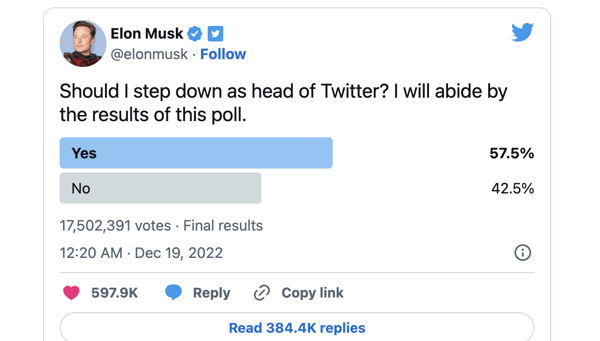
Plus, what's up with all the different check mark colors? He has us completely confused. It's a shame for now, but hopefully he'll pull it together so we can continue reading (and laughing at) ridiculous public conversations!
12. Ryan Air's Offensive Tweet
When Jaden Sancho failed to make England’s squad for the 2022 FIFA World Cup, a controversial Tweet found the low-cost airline in some trouble. They jokingly offered that they would still fly him, and he did NOT find it cute.
Many fans criticized the airling for publicly shaming a young, up and coming athlete who probably already had enough pressure on his mind without being laughed at. Ryanair, you already charge us too much for luggage. Make sure to keep the social media (actually) sweet. Sarcasm not recommended!
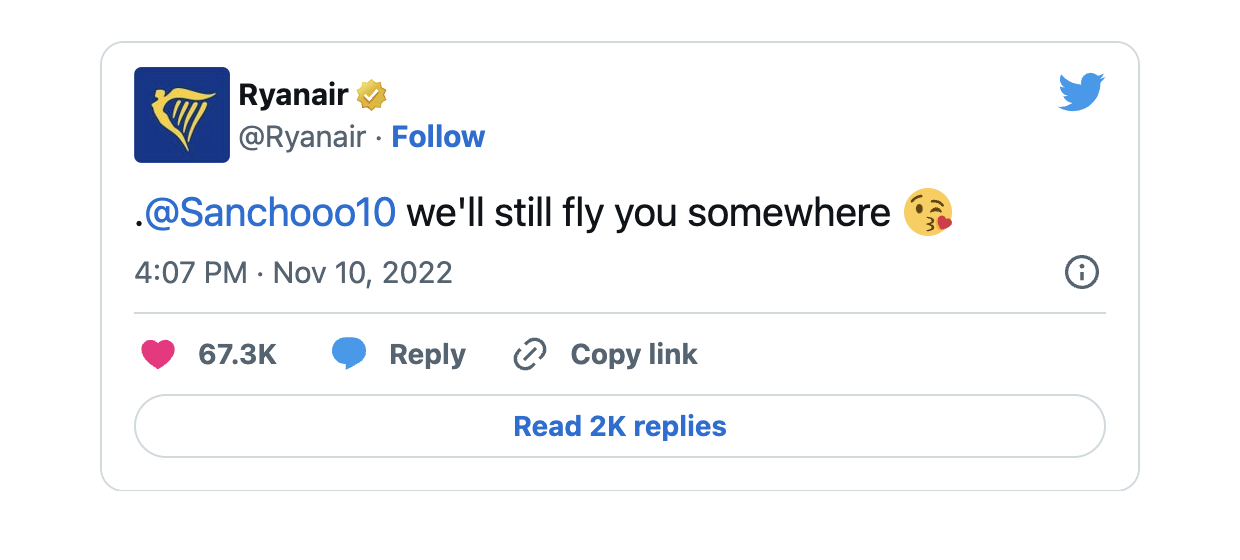
What Should You Learn From These Bad Marketing Campaigns?
This is definitely one of those situations where you should take notes on another's mistakes. There's a lot to be learned from analyzing a failed marketing campaign.
Always Proof Your Projects.
Common sense is not so common after all. When you’re creating and publishing your content, build a process that ensures you have plenty of eyes on your content. That process should include an editor or someone who can proofread your text before you hit ‘publish.’
Don't Fall Out of Touch.
Most of these marketing campaigns bombed because they were essentially just completely out of touch. Always consider the implications behind your messaging. When you’re making jokes, look at them from all angles and perspectives.
When there’s a lighthearted, fun debate going on, keep the fun going! Leverage it to build brand awareness, but don’t make tasteless, insensitive jokes. If you’re going to use pop culture references in your marketing, do your research. Make sure you understand the context of your reference.
Humor can win big, but don’t sacrifice your brand’s values and beliefs for a few chuckles. Remember, comedy is subjective. While you may not intend to offend your audience, if you’re addressing a touchy subject, you might cause a backlash and hurt your brand and reputation.
When you’re running a campaign in a specific region, don’t forget that your messaging can (and in some cases, certainly will) be shared with markets in other parts of the world.
Pay Attention to Current Events.
Some of these examples were simply launched at the wrong time. It's hard to hold any one person accountable when nature speaks, but an organization should always take a moment to pause when disaster happens. It may be to your benefit to hold off on launching a campaign if it will wind up feeling misguided.
If you’re creating content that’s relevant to such events, do so with a genuine interest in educating your audience about the gravitas of the situation. Remember, consumers aren’t stupid. They will see right through your efforts to see what you’re truly striving for, capitalizing on a PR opportunity while real people suffer.
Campaigns are often planned out months in advance. It’s easy to overlook these slip- ups, but it’s important to consider national and international events before your campaign begins. Review your calendar regularly, and check for other poorly timed campaigns.
Aim for a Great Customer Experience.
When you’re creating a campaign that incorporates user-generated material (like Wikipedia updates or selfie submissions), prepare for the worst.
Unfortunately, trolls exist, and they will look for ways to sabotage your efforts. Build your strategy in a way that prevents these troll attacks.
How to Create a Successful Marketing Campaign
It's easy to criticize and judge those who have stumbled in the past, but it should be acknowledged that there's no copy-and-paste method for a fantastic marketing campaign. There's a lot of research to be done and a lot of creative manpower behind it.
A successful marketing campaign is comprised of:
- Clear objectives and goals
- A defined target audience
- Attention-grabbing content
- Monitoring results for optimization
While it's important to try to stand out with your marketing, it's easy to have a great idea go south when using new channels, and even traditional ones.
The bottom line is, before you publish, post, or print, take a close look at your message. Review your copy and take a hard look at your campaign in terms of the current social context. Oh, and always get an educated second opinion before publishing or going live with any campaign! A second pair of eyes is always appreciated when going live!



Kathryn Bouchard
Kathryn is a Content Marketer at Bluleadz. She graduated from James Madison University with a Master's degree in Political Science and is currently living in Castellon, Spain. From Arlington, VA, she loves to read, run, swim, and study all things legal.